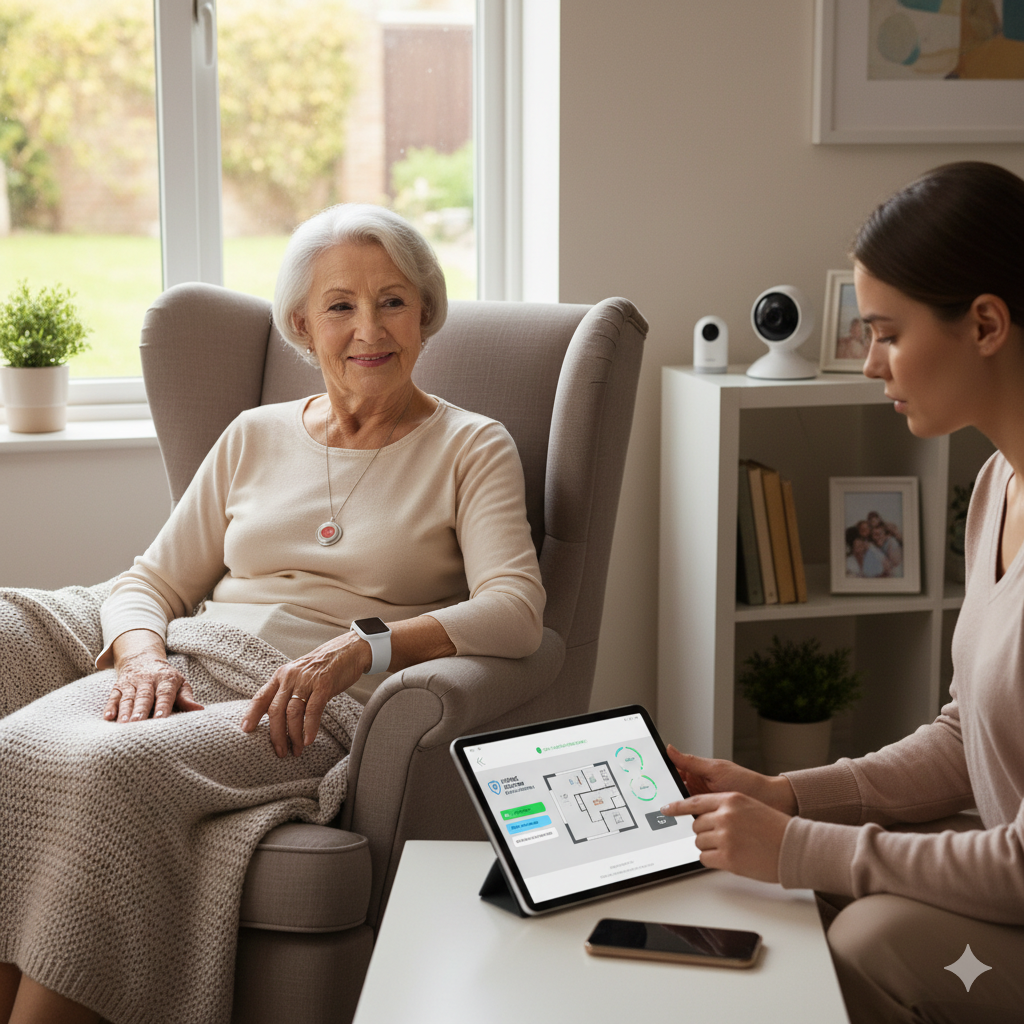As people age, independence often becomes both a source of pride and concern. Living alone gives seniors freedom, but it also brings safety challenges—from health emergencies to potential security risks.
Fortunately, modern home security for seniors and elderly monitoring systems make it easier than ever to protect loved ones while maintaining their independence.
This guide explores smart and practical ways to keep seniors safe at home—combining technology, habits, and design for complete peace of mind.
1. Why Home Security for Seniors Matters
For elderly people living alone, small accidents can have big consequences. Falls, break-ins, or sudden health issues can all escalate quickly without help nearby.
According to the National Institute on Aging, over one in four seniors experience a fall each year, and delayed assistance can lead to serious complications. Similarly, isolated homes can be more vulnerable to burglary or scams.
That’s why integrating smart home security systems and elderly monitoring solutions is no longer optional—it’s essential.
2. Smart Devices that Improve Senior Safety
a. Elderly Monitoring Systems
Modern elderly monitoring systems do more than just detect movement—they track daily activity, monitor vital signs, and send alerts to family members or caregivers in real time.
Examples include:
- Fall detection sensors: Automatically alert emergency contacts if a fall occurs.
- Wearable GPS trackers: Help locate seniors who may wander or get disoriented.
- Smart health monitors: Track blood pressure, heart rate, and sleep patterns.
🏷️ Tip: Look for monitoring systems compatible with Alexa or Google Home for easy voice control.
b. Smart Home Cameras
Indoor and outdoor smart cameras, especially those with two-way audio and AI-based alerts, let family members check in remotely.
A smart baby camera or Wi-Fi indoor cam can easily double as a senior monitoring tool—quiet, discreet, and high-resolution.
c. Smart Locks and Door Sensors
Forget worrying about lost keys. Smart locks allow family members or caregivers to access the home securely using digital codes or smartphones.
Door/window sensors send instant notifications if there’s unexpected activity—helping detect intrusions or accidental exits.
3. Senior Home Safety Tips: Simple but Powerful
Technology helps, but small daily habits matter too. Here are practical senior home safety tips:
- Ensure good lighting: Install nightlights in hallways and bathrooms.
- Remove tripping hazards: Loose rugs or cords can be dangerous.
- Use voice assistants: Devices like Alexa or Google Nest can make calls, control lights, and remind about medications.
- Keep emergency contacts visible: Place lists near phones and entryways.
- Regularly test alarms: Smoke and carbon monoxide detectors should be checked monthly.
💡 Bonus: Add motion-sensor lights outside for better visibility and crime deterrence.
4. How Family Members Can Stay Connected
Families often struggle to balance independence and safety. Thankfully, smart systems now make remote care easier.
- Use shared apps: Most monitoring systems have apps that allow family members to receive alerts, view camera feeds, and communicate directly.
- Set daily check-ins: Schedule video calls or quick “Good morning” messages.
- Emergency automation: Some systems can automatically call emergency services when no movement is detected for a set period.
🧠 Insight: Combining tech and emotional connection prevents isolation—one of the biggest risks for seniors living alone.
5. Choosing the Right Home Security System for Seniors
When choosing a home security for seniors setup, focus on simplicity, automation, and integration.
| Feature | Why It Matters | Example |
| Easy setup | Seniors shouldn’t rely on complex tech support | Plug-and-play Wi-Fi cameras |
| 24/7 monitoring | Immediate help when needed | Professional alarm services |
| Fall & health sensors | Detect and alert in emergencies | Smart wearables |
| Voice activation | Hands-free control | Alexa or Google Assistant |
| Family access | Shared notifications | Mobile security apps |
✅ Recommendation: Choose systems that support both smart home integration and medical emergency alerts.
6. Building a Safe, Smart Living Environment
Creating a secure space goes beyond installing devices—it’s about designing for prevention.
- Use contrasting colors for floors and walls to reduce missteps.
- Install grab bars in bathrooms and near stairs.
- Place sensors strategically—near doors, beds, and high-risk areas.
- Opt for automatic shut-off appliances to prevent kitchen accidents.
For advanced users, integrating IoT-enabled devices like motion sensors, smart thermostats, and AI cameras creates a fully automated home that responds intelligently to seniors’ daily patterns.
7. Balancing Privacy and Safety
One common concern is privacy. Seniors may feel uncomfortable being constantly monitored.
The key is to use discreet devices and set clear data-sharing rules.
- Use cameras only in common areas.
- Disable continuous recording and use motion-based alerts.
- Encrypt cloud storage and use trusted brands with strong privacy policies.
🕊️ Respecting independence builds trust and ensures long-term adoption of security tech.
Conclusion: Empowering Seniors Through Smart Safety
Aging shouldn’t mean sacrificing freedom or peace of mind. With today’s smart home security solutions, elderly people living alone can stay independent—while families stay connected and reassured.
Investing in home security for seniors and elderly monitoring systems isn’t just about technology—it’s about dignity, safety, and love.


Integration of Smart Home and Home Security: A Complete Guide
Portable Security Solution for Rental Users